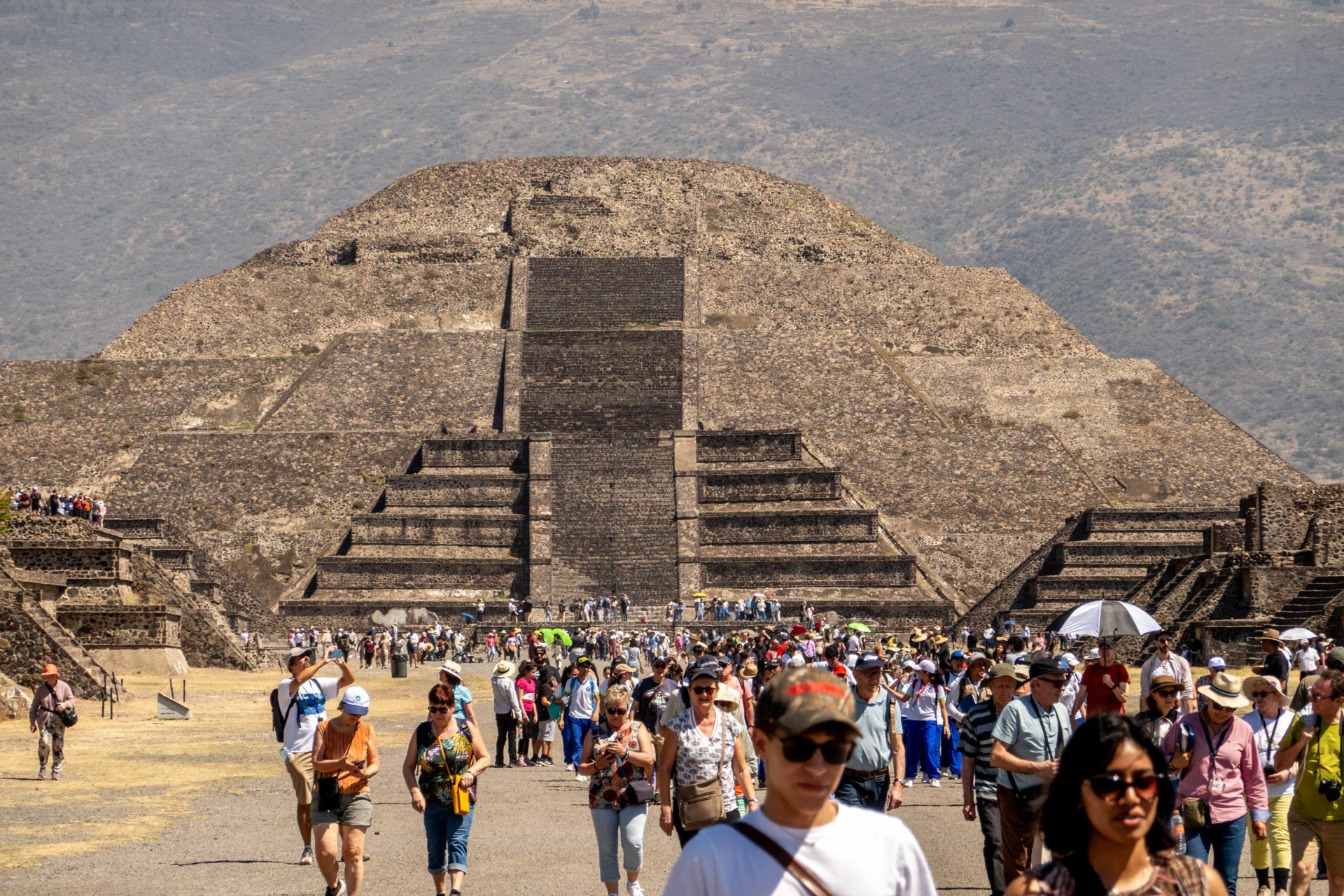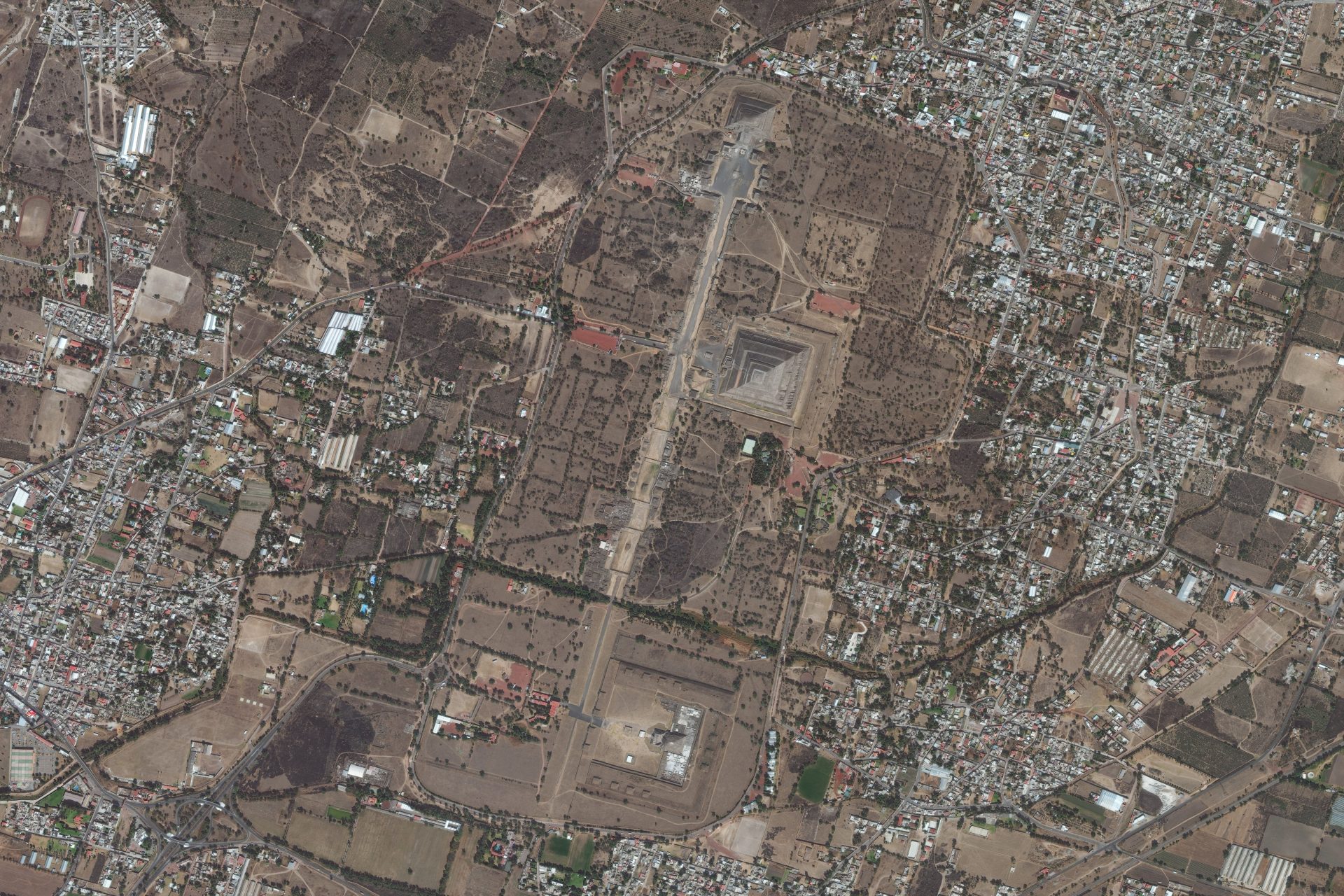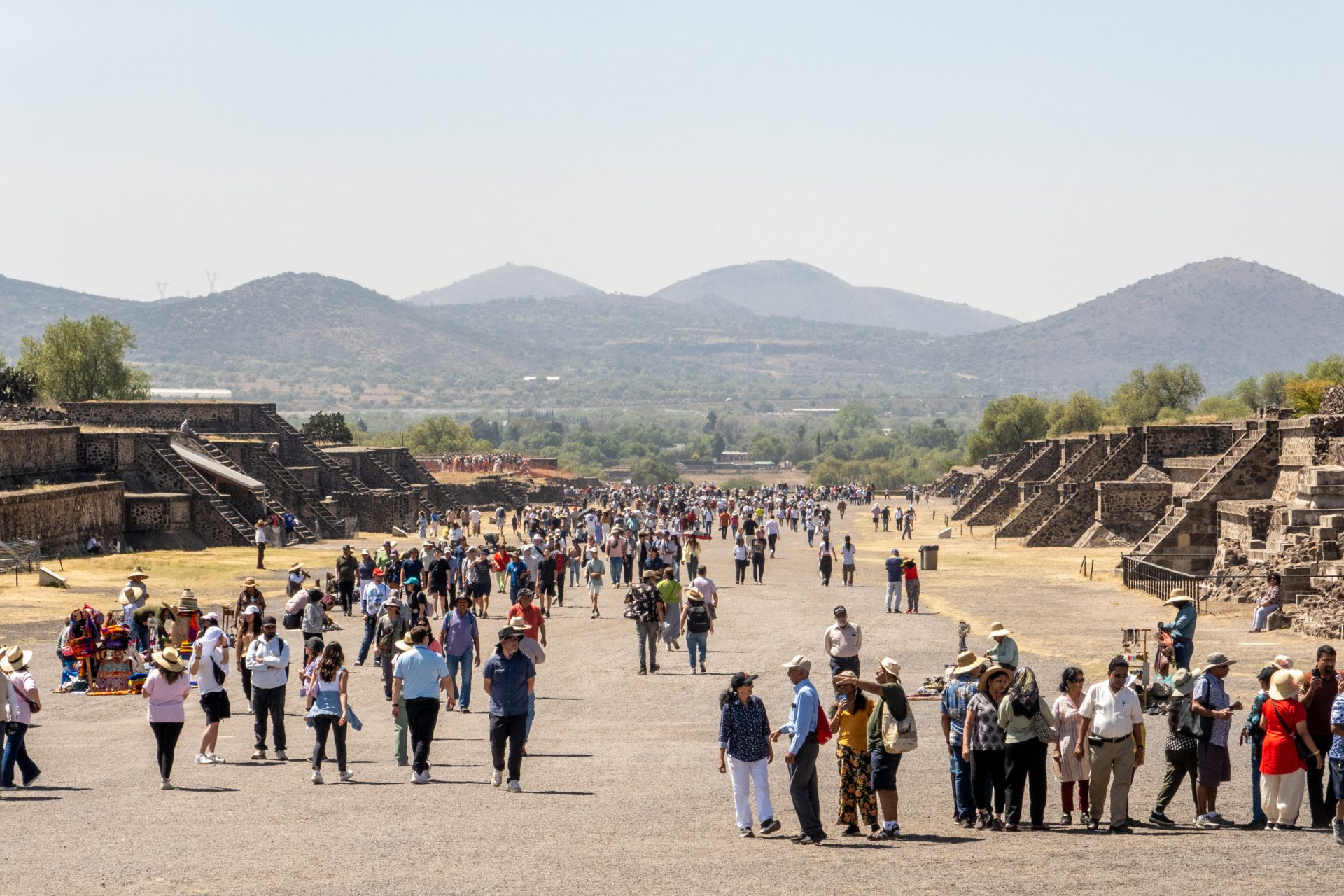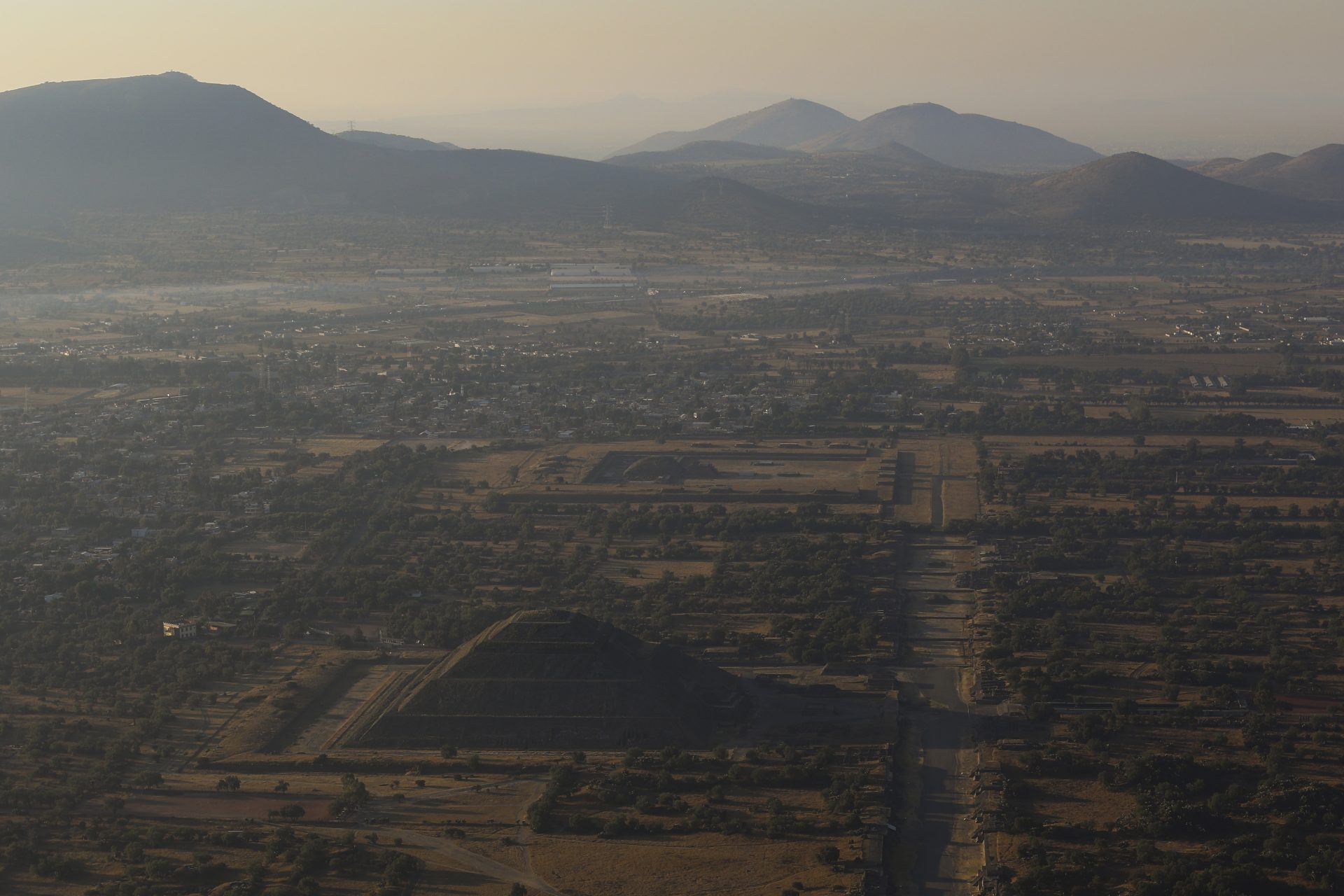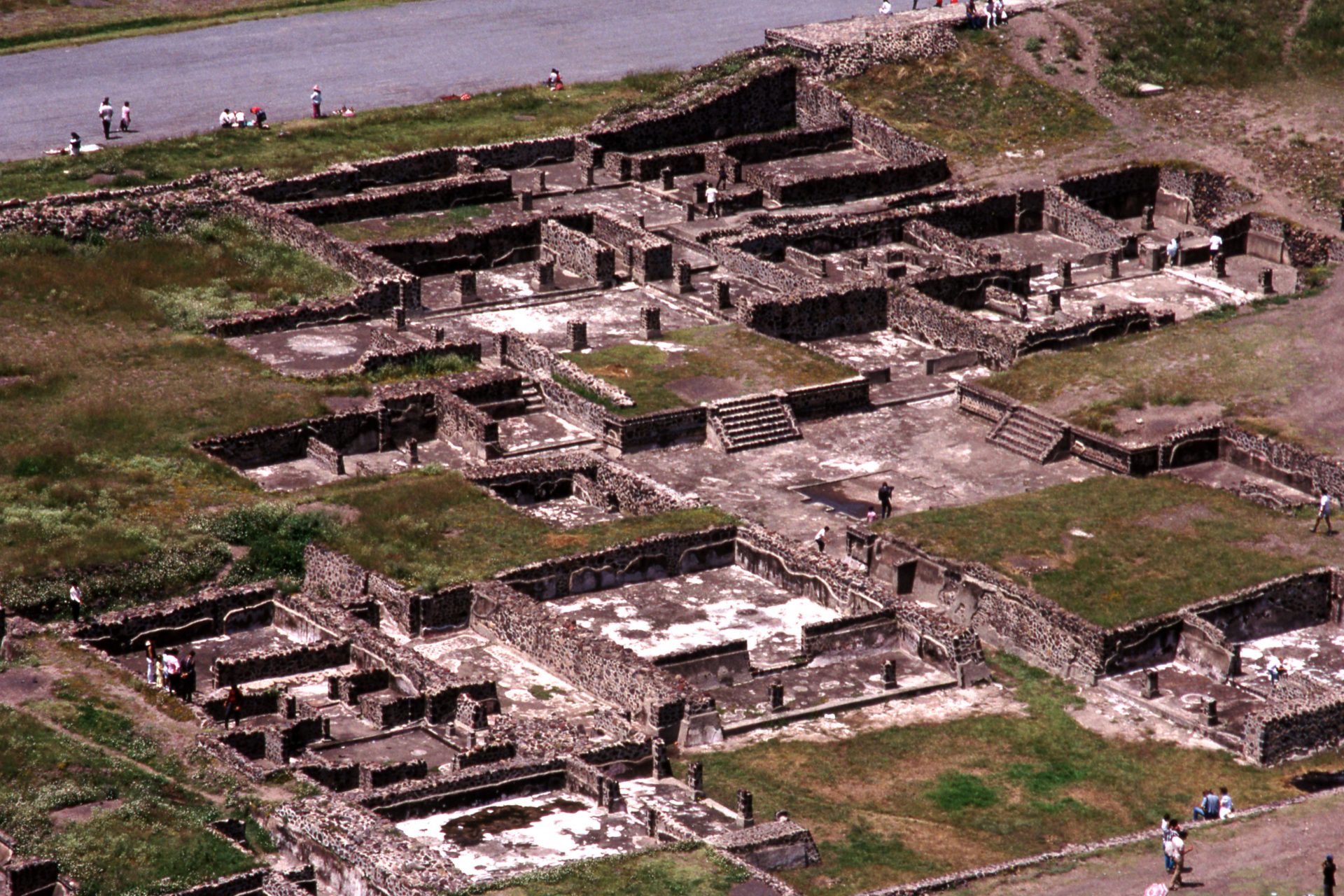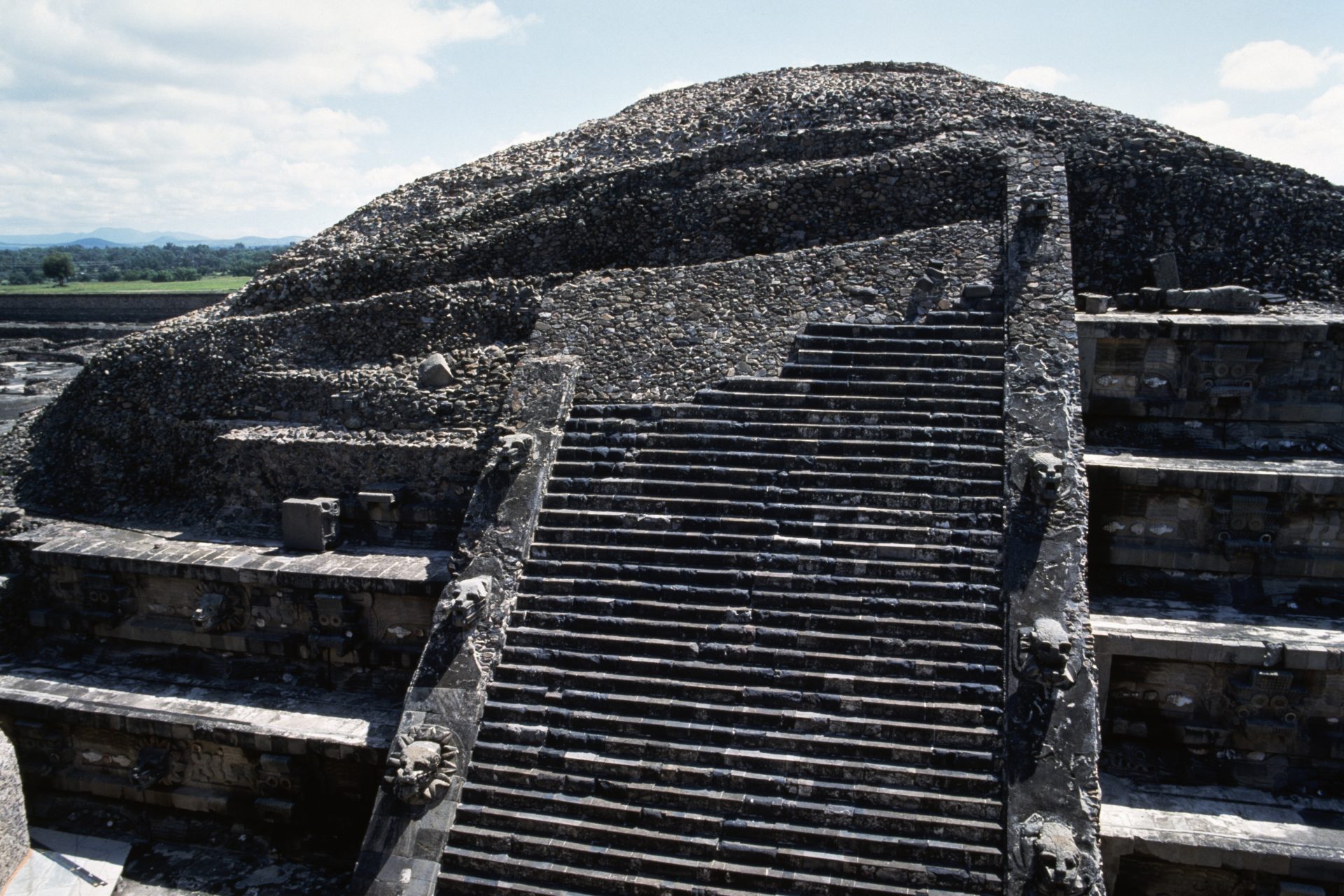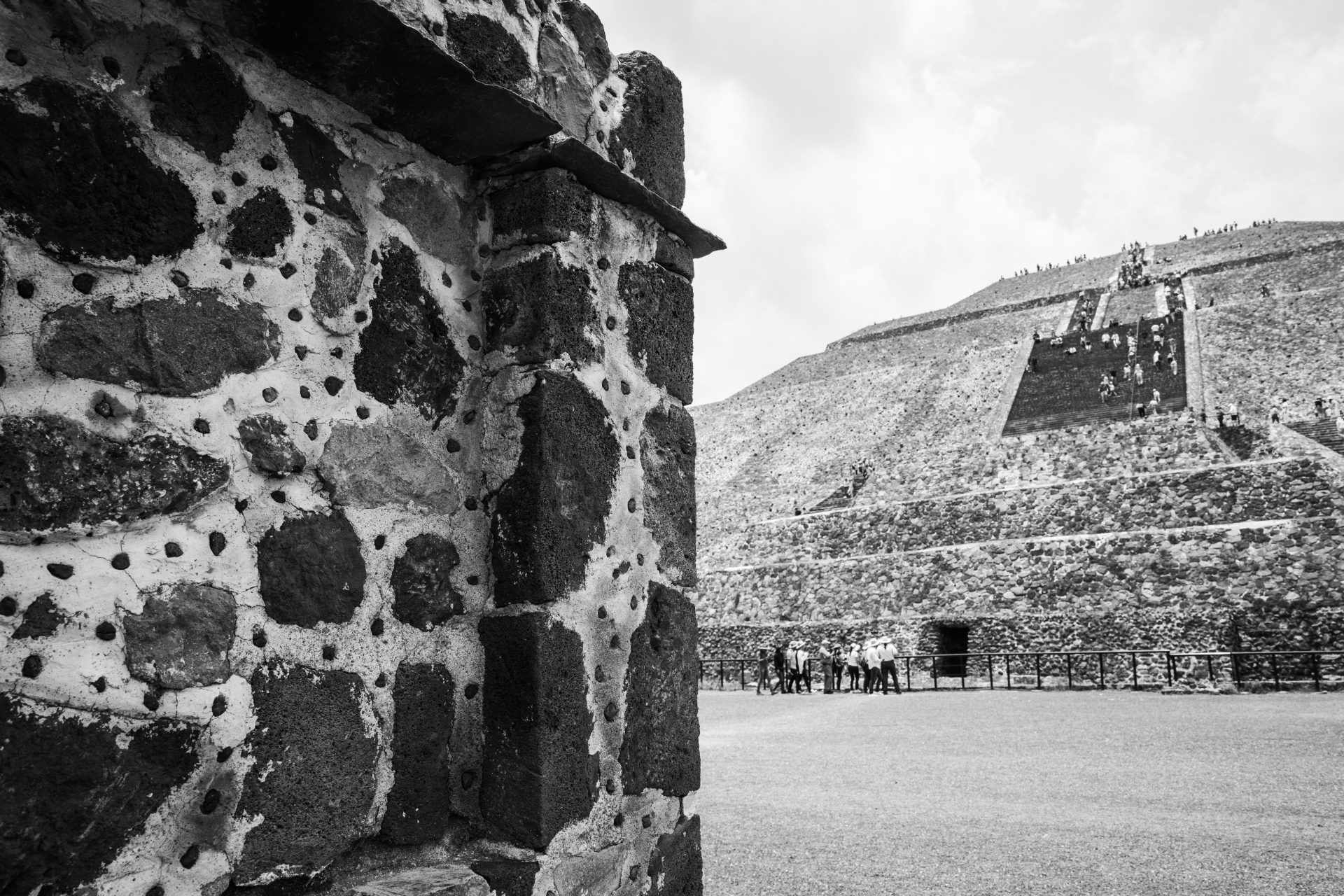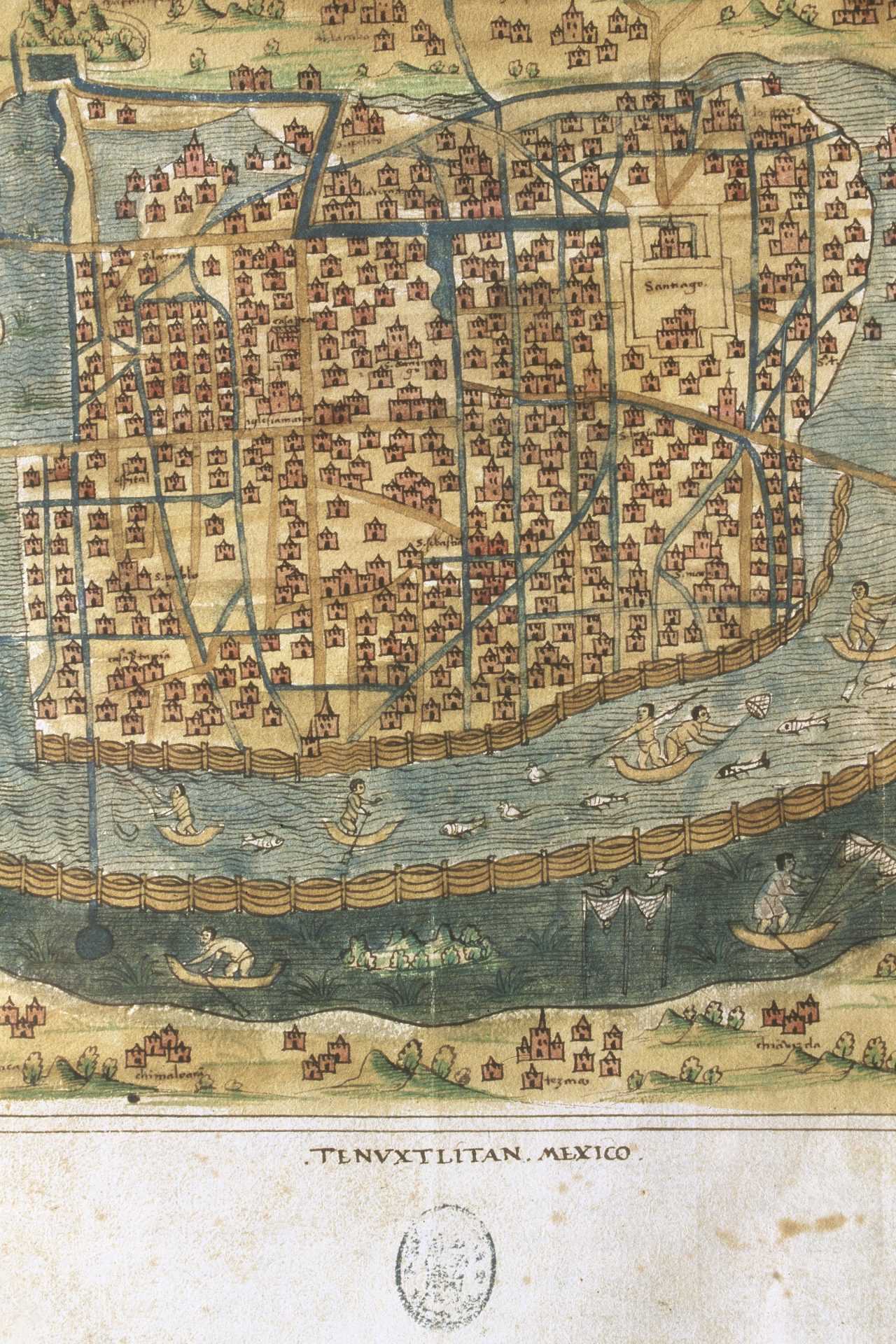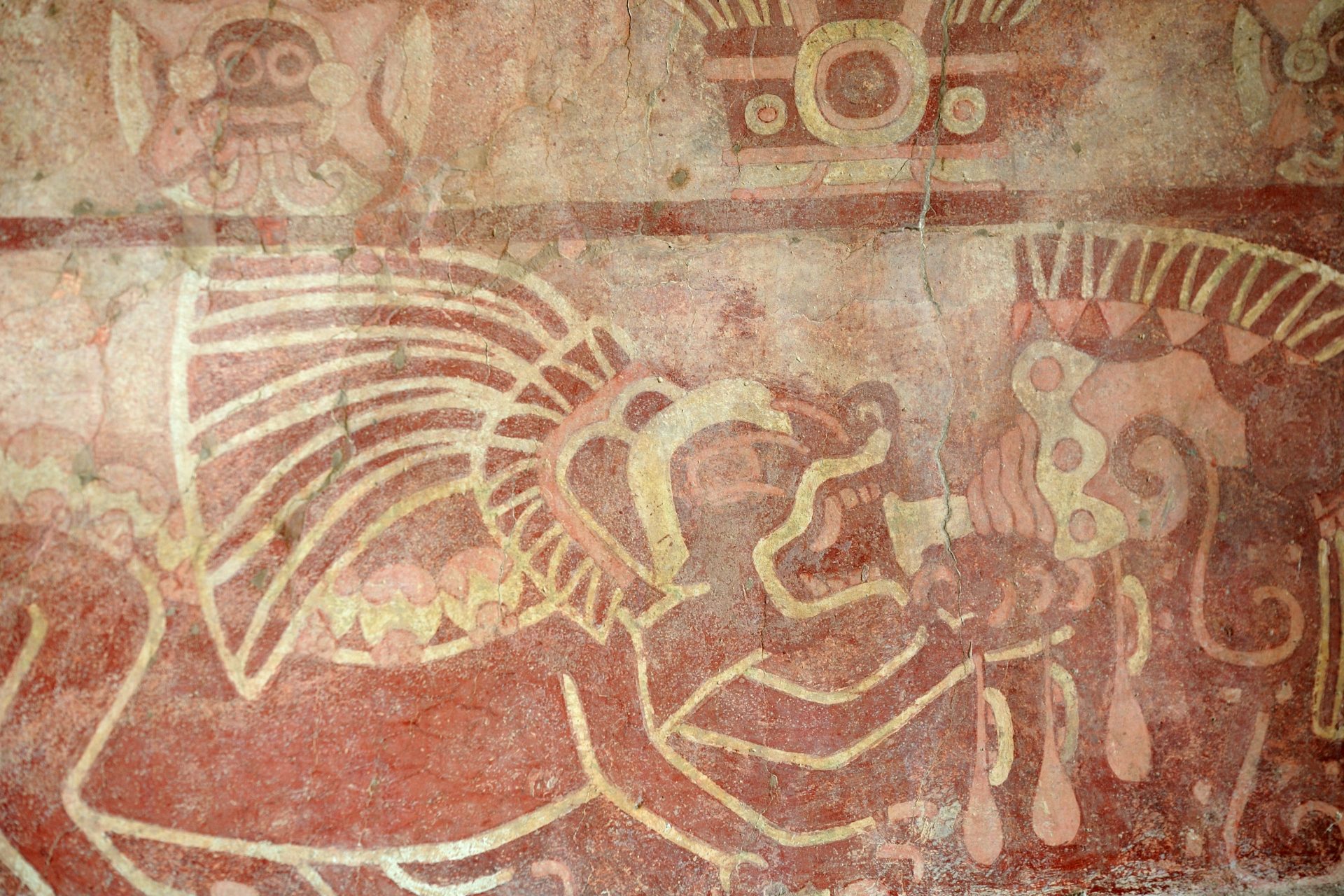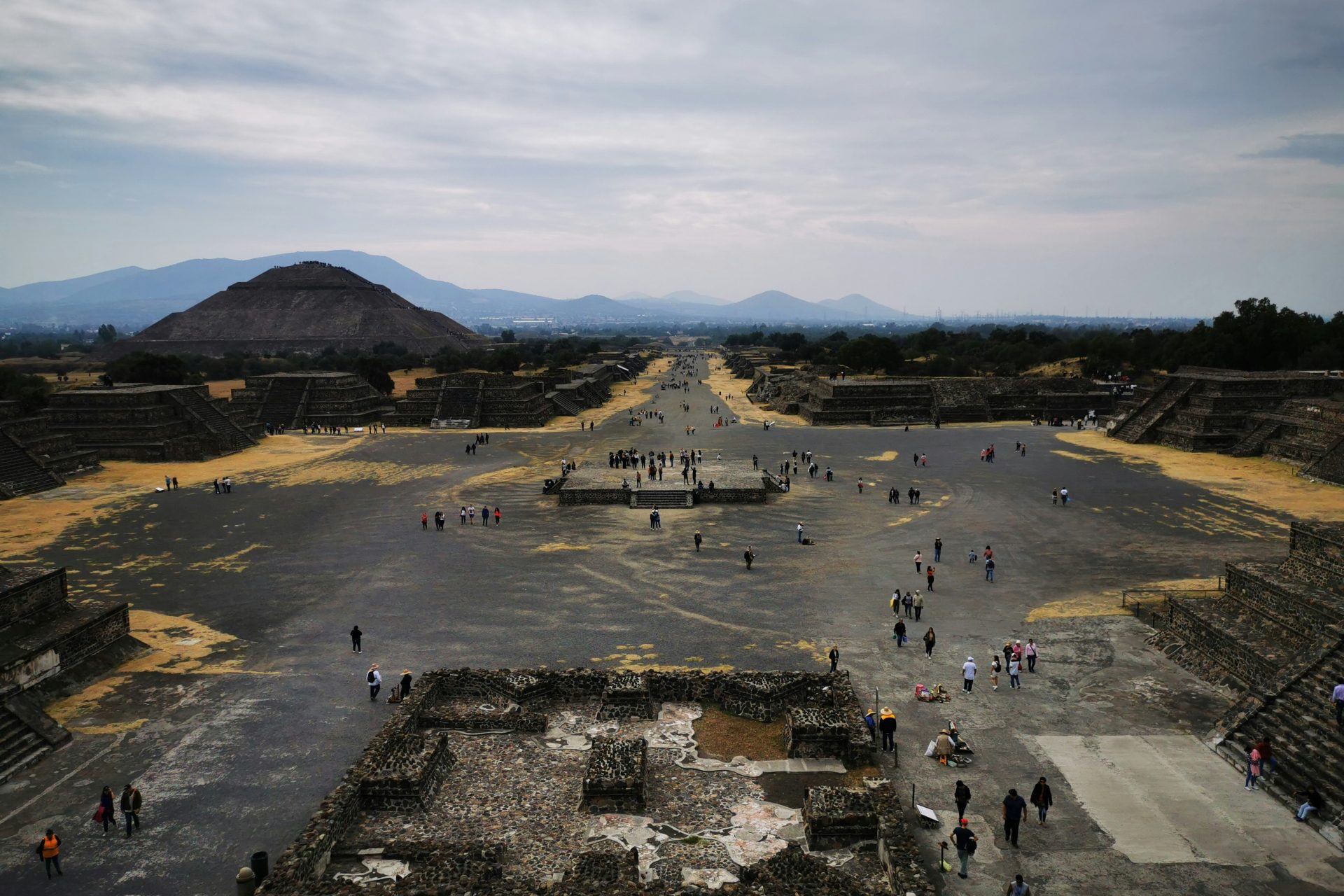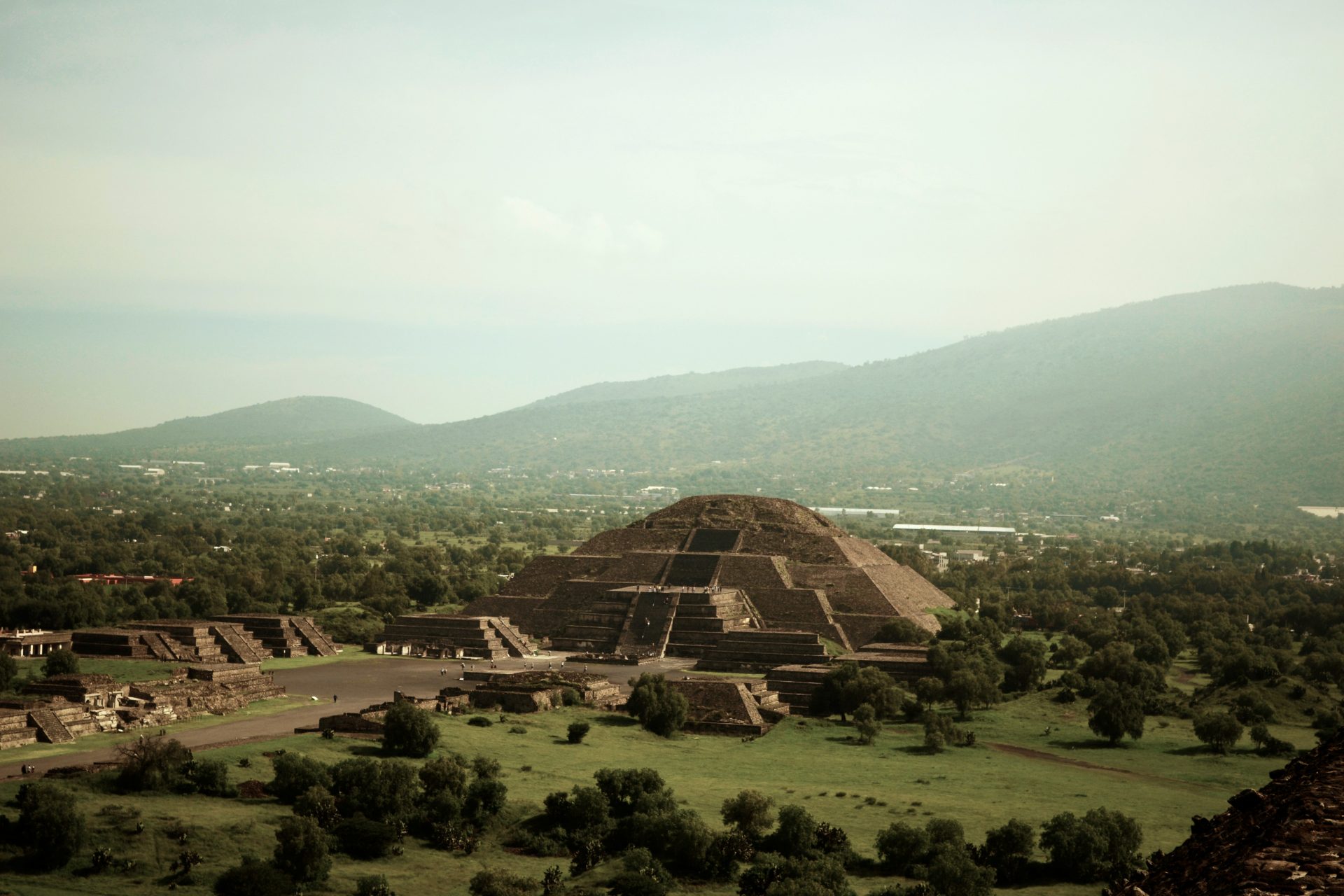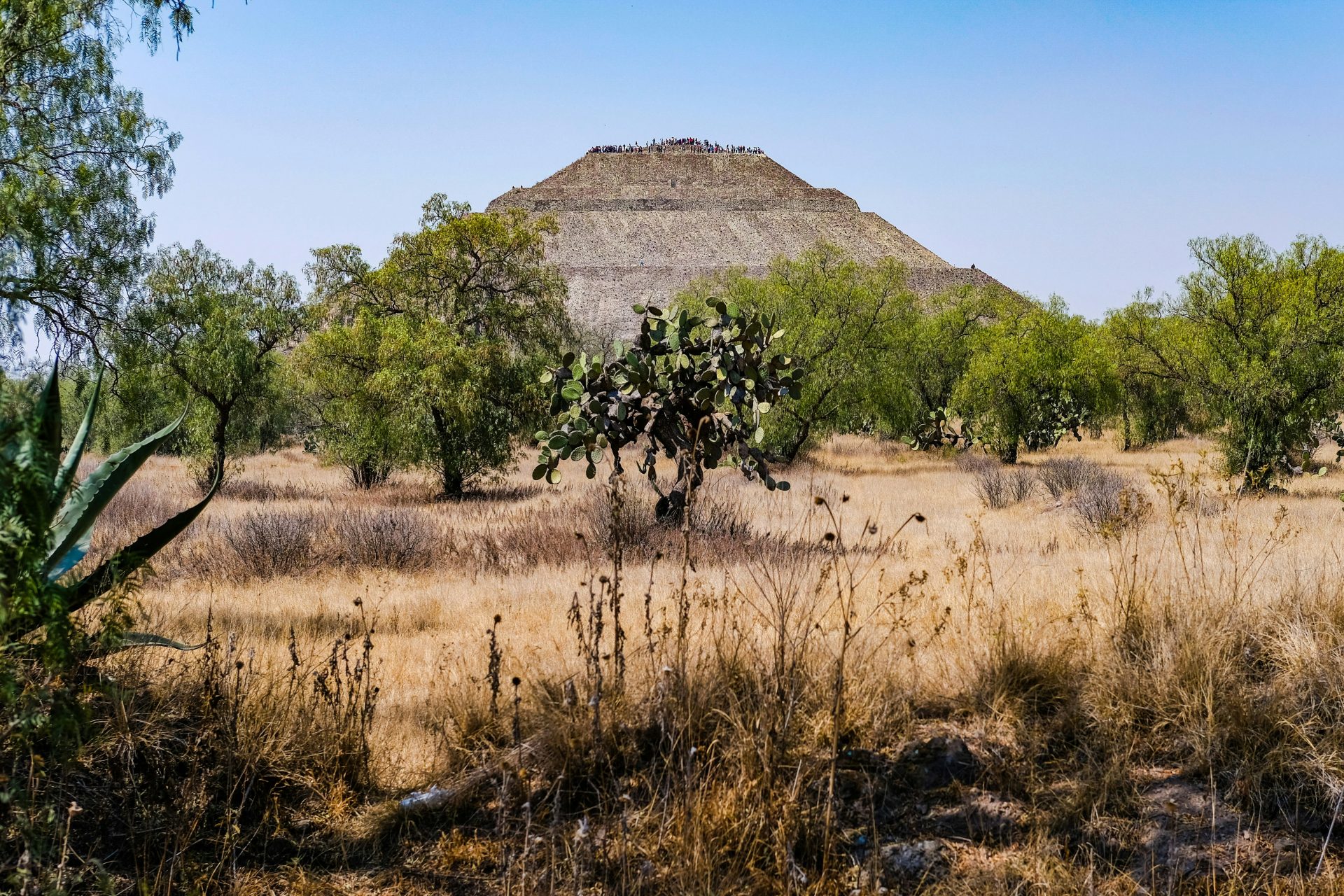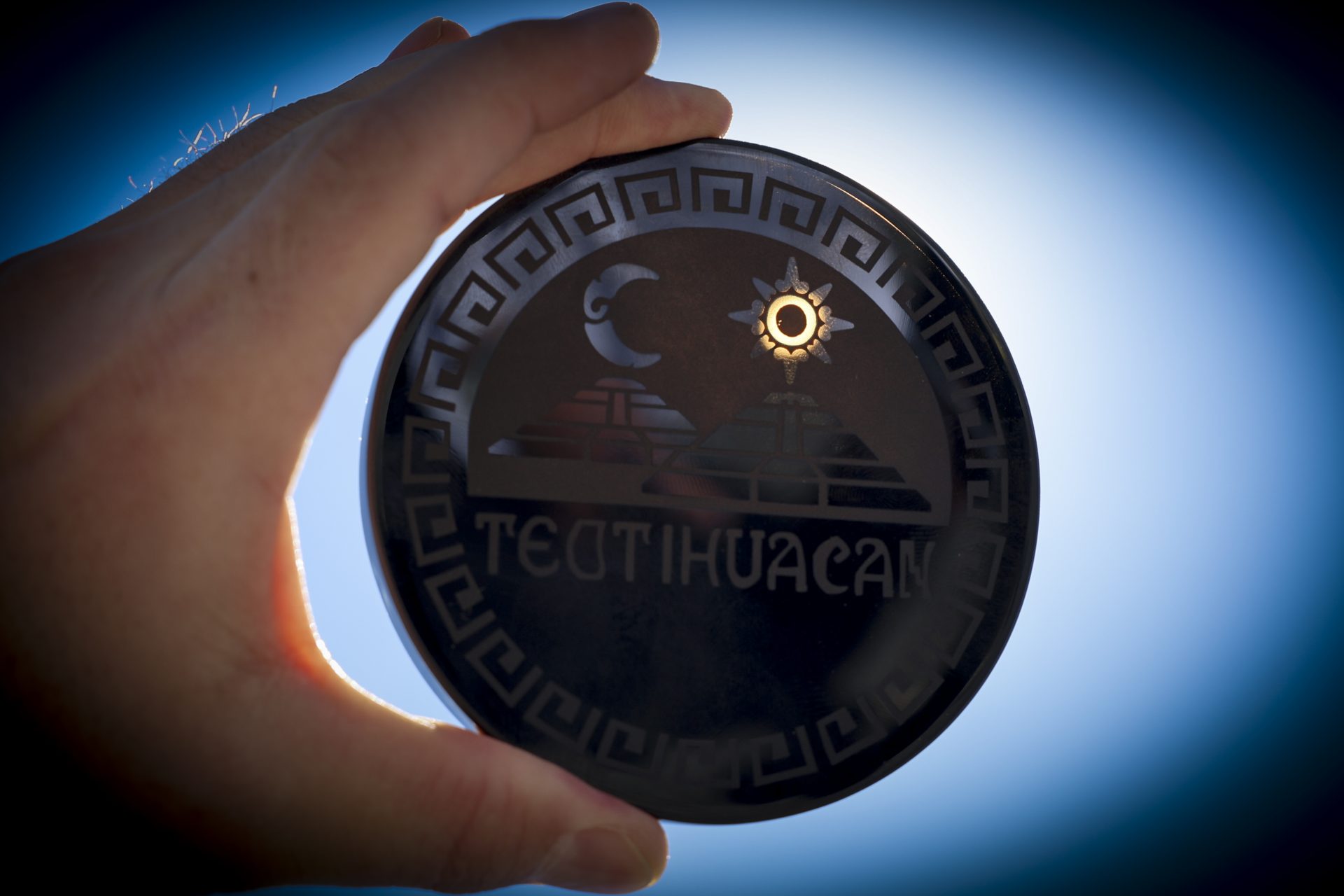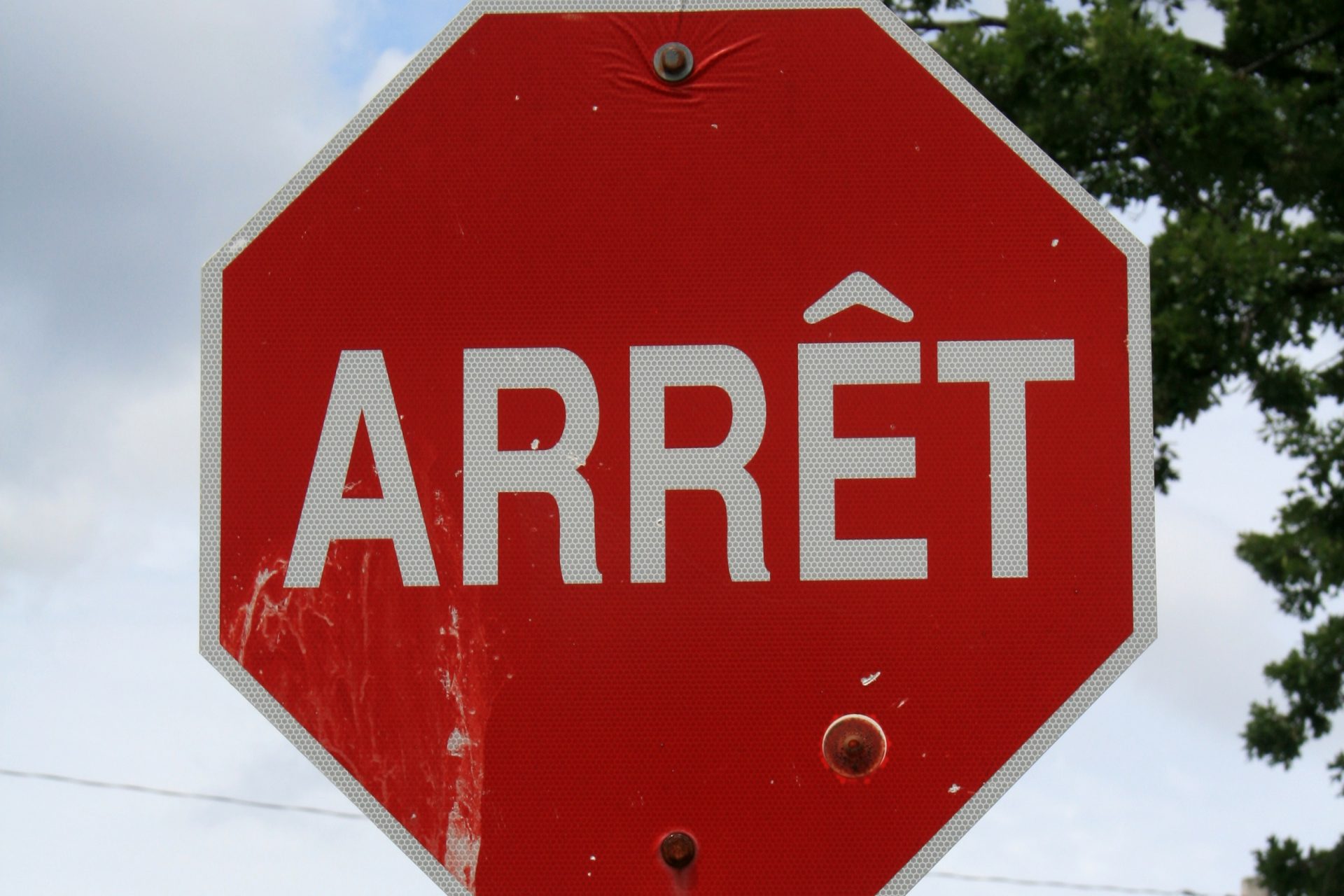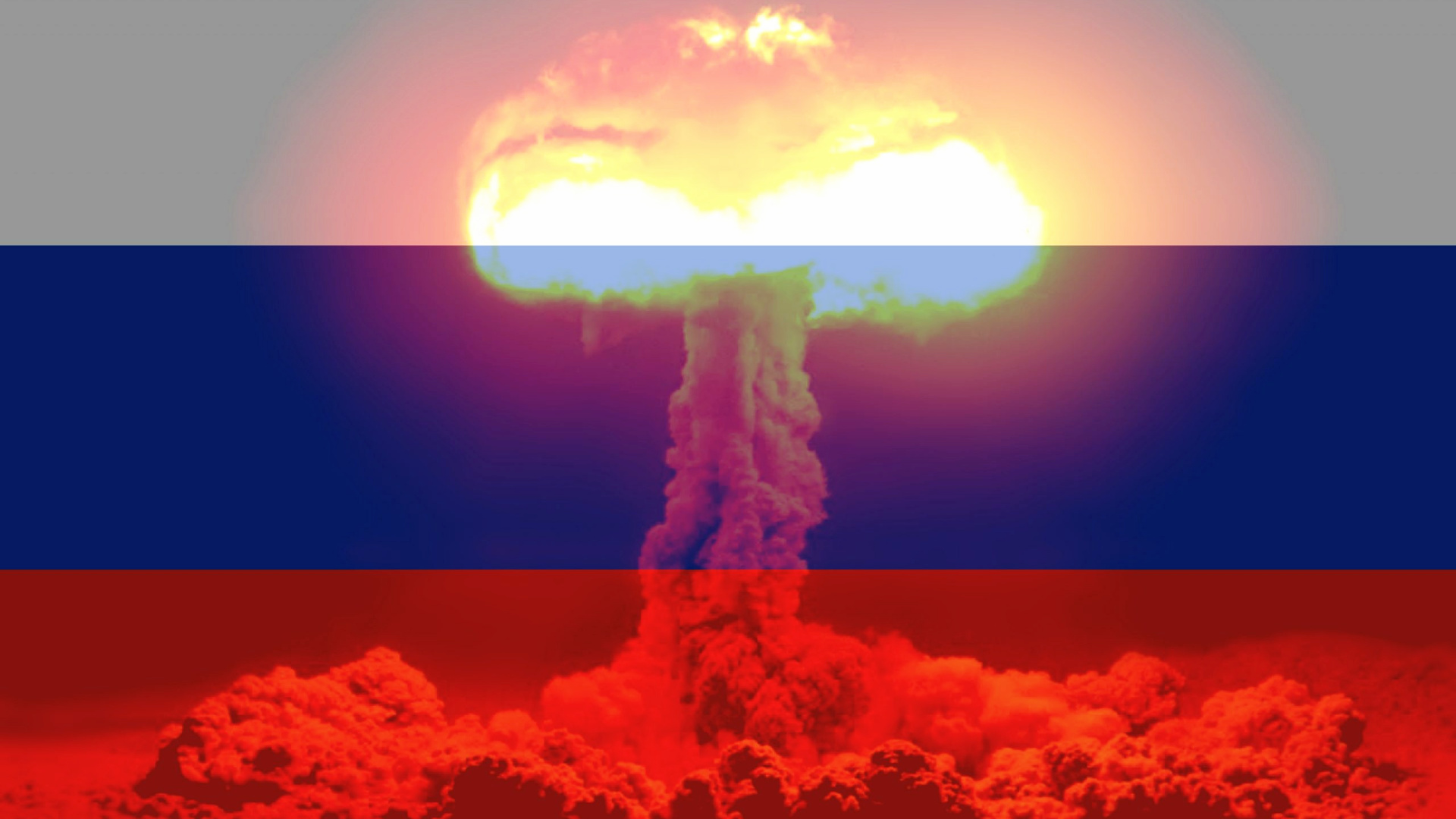The collapse of Teotihuacán: the end of the city of the gods
For years, experts have debated all the causes that led to the end of Teotihuacán, the “city of the gods”, one of the largest urban centers in Mesoamerica in pre-Hispanic times.
According to archaeologists, the founders of this city were the survivors of the eruption of the Xitle volcano, which devastated Cuicuilco, another recognized city-state of the time. Teotihuacán arose from its ashes. For the Mexican archaeologist Eduardo Matos Moctezuma, its founders built it with the purpose of venerating the gods and thus saving themselves from another catastrophe.
The city-state was imposing. It extended over about 22 square kilometers (around 13 square miles). It housed three important buildings: two imposing pyramids, that of the Sun, at about 65 meters or 213 feet high, and that of the Moon, at about 45 meters or 147 feet, and the temple of the Feathered Serpent or of Quetzalcoatl .
The city developed around these buildings, with the residences of the middle and upper classes, divided by the Avenue of the Dead, which more than two kilometers or 1.2 miles long.
A recent study, published in the Journal of Archaeological Science, sheds more light on the collapse of a city that once had a population of 100,000 at its peak.
The research, titled 'Teotihuacan ancient culture affected by megathrust earthquakes during the early Epiclassic Period (Mexico)', points out that five large earthquakes, between the years 100 and 650, destroyed or severely damaged its buildings leading to the collapse of the civilization.
The researchers reached this conclusion after observing the damage to these buildings due to the Archaeological Effects of Earthquakes , "in addition to the archaeological information collected by other experts in previous years."
The study indicates that, of the five earthquakes, at least two were "intense and destructive", influencing the evolution of architectural and construction styles.
The Teotihuacan residents, in fact, tried to modify and restructure these buildings to limit the effects of new earthquakes. However, apparently it was not enough.
Photo: Daniel Lloyd Blunk-Fernández / Unsplush
Although it is difficult to establish the origin of these earthquakes, experts place them in the Mesoamerican Trench of the Pacific Ocean, which could explain the intensity of these earthquakes.
As the study explains, the combination of the energy released by earthquakes, the seismic frequency and the sediment filling of Lake Texcoc could also explain the "deformation patterns observed in the pyramids and temples throughout history of Teotihuacan.”
This new theory, according to the researchers who participated in the study, does not conflict with other existing ones about the end of this civilization.
Older studies, in fact, point to internal wars, poor administration, and deterioration of exchange networks in a very large city at the time, which led to looting and fires.
Photo: Vibe Adventures / Unsplush
The truth is that the force of nature and its mistreatment had a certain weight in the fall of this city around 650 AD and the flight of its population to safer areas. As the Mexican Archeology magazine explains, the city had grown too much in recent times to the point of invading the alluvial plain and depended on the area of Texcoco and Iztapalapa for food supplies.
Photo: Abimelec Castillo / Unsplush
Likewise, the extensive consumption of wood for various activities - food, heating and construction - caused deforestation of the surrounding area and soil erosion that coincided with a time of prolonged drought.
Photo: Edgar Cavazos / Unsplush
This would cause enormous social unrest, since the rulers of these cities considered themselves in charge of the rain and fertility of the land, which caused the abandonment of one of the most fascinating archaeological sites in the country.
More for you
Top Stories



